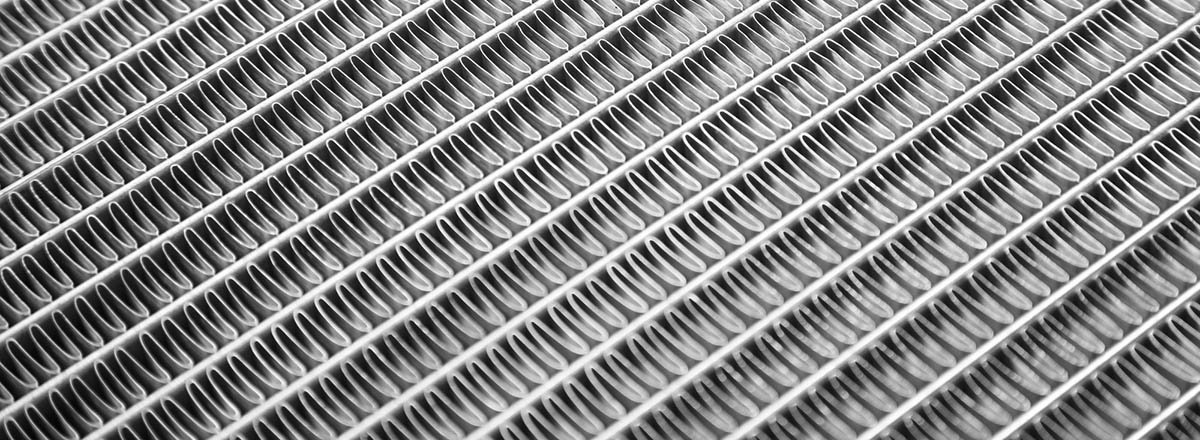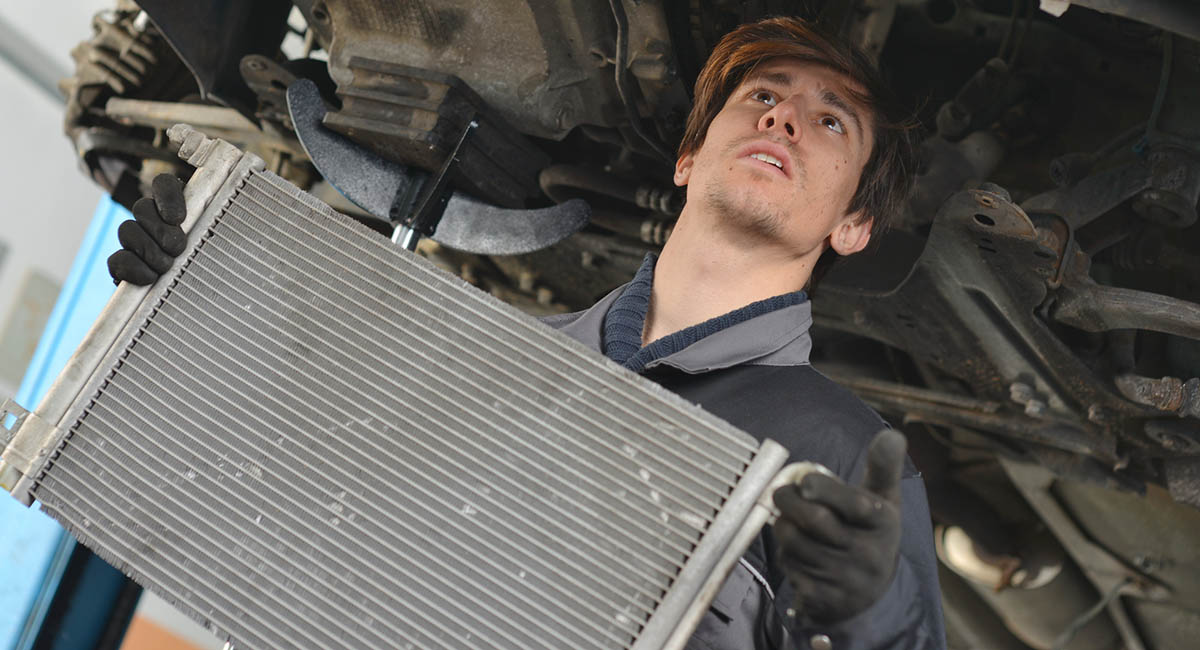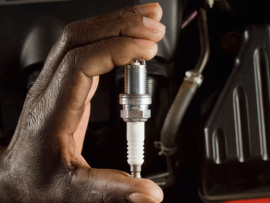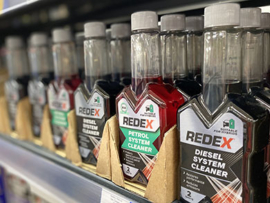
Repair of the radiator in a car often has to be done when there are problems with the engine cooling system. As everyone knows, the radiator is the most important part of the cooling system of every car with internal combustion engine. It is in it that the antifreeze breaks off from the excess heat, creating the engine optimum temperature operation mode.
One of the main symptoms of a car’s faulty radiator is that the engine is overheating. It is impossible to postpone the solution of this problem, as overheating increases the wear and tear of the engine parts and there is a high probability of failure of the power unit in the future, which will require significant financial injections for its repair.
Below we will describe the main ways of repairing car radiators with your own hands, and what to do if the radiator leaks.
Causes of Radiator Repairs
The cooling radiator may need to be repaired for various reasons. Malfunctions may be due to natural wear and tear as well as negligence on the part of the car owner. Removing a radiator malfunction may be just the first step in a complete engine repair.
There are two major faults in car radiators, that require repair:
- Coolant leak;
- Closing the inner cavities.
Radiator leaks are dangerous for the following reasons:
- A decrease in the coolant quantity may cause the permissible engine temperature to be exceeded;
- The leak can be a source of danger for humans. Coolant creates high pressure in the system, and the formation of a leak can cause a kind of hot “geyser”. If it hits the skin or eyes, the driver will get serious burns as the coolant has a high thermal capacity;
A blockage of the radiator tubes disrupts fluid circulation inside the radiator. As a result, the lower part of the heat exchanger cools down first and then the entire radiator. In the meantime, the coolant heats up quickly, creating the risk of overheating the engine.
- Cocking of the radiator is usually caused by scale formation. This is particularly common in motorists who have at least once poured ordinary water into the engine cooling system. To avoid this, find out what must be poured into the engine cooling system.
- Sometimes the radiator is clogged with a mixture of oil and antifreeze. This happens if motor oil enters the cooling system for some reason. For example, when there’s a hole in the engine block or head gasket. An oil leak may not be visible, and the coolant will eventually turn into jelly, which clogs the inner cavities of the heat exchanger.
Below we have identified the malfunctions, let’s look at how to repair the heaters with our own hands.
Note: Before servicing the radiator yourself, make sure that you follow the manufacturer’s original instructions.
How to Repair The Radiator With Your Own Hands?
Simple repair of radiators of the car, for example, elimination of a small leak can be done independently by most car enthusiasts.
Another thing is soldering the engine radiator or heater core. Here you cannot do without experience (see video below). As we have already mentioned, most problems with the radiator can be solved by the car owner with his own hands. In some cases, you can do only the loss of precious time, and in others you will have to buy special repair compounds and materials in the store. It all depends on the breakage and type of repair.
Detaching the radiator. Almost any repair of the radiator requires its detachment from the car. And here, unpleasant surprises await the motorist.

- First, the coolant must be drained from the system. If the engine has been very hot beforehand, you should wait about an hour to avoid accidental burns when draining. Some cars have drain holes at the bottom of the radiator or cylinder block. If the manufacturer has not provided a drain hole, you will have to remove the flexible hose from the bottom of the radiator. Place an antifreeze collecting container under the engine compartment before draining.
- When the liquid has been drained, disconnect the flexible hoses that are connected to the radiator, disconnect the electrical wiring from the sensors and fan, and unscrew the fasteners. The radiator can be removed with or without the fan. It all depends on the ease of operation.

Cleaning inner cavities of the radiator. One of the simple ways to repair the radiator is to clean the inner cavities from dirt and deposits. It is desirable to have running water at hand to create the necessary pressure.
- To remove scale and other deposits, it is best to purchase a special product. It will remain to dilute it in water according to the manufacturer’s recommendations, if necessary, and pour it inside the radiator. The radiator holes should be plugged in beforehand so that the cleaning fluid can dissolve the dirt for some time. When the cleaning time is up, it will be left to drain the “grease” and wash the inner cavities in flowing water.
- When removing oily contaminants, organic solvents such as petrol or ptroleum solvent can be used. But first you must use a wooden spatula or a stick to remove the dense mass around the spigots. Then a small amount of solvent is injected into the radiator, the opening is closed and the radiator should be slightly shaken. After full cleaning, it will be left to flush the inside of the radiator with flowing water.
Below we will consider the ways of repairing and eliminating leaks in the radiator.
What To Do If a Car Radiator Is Leaking
Let’s move on to the most interesting thing – how to eliminate leaks in the radiator of the car. The radiator can leak in different places. Some leaks can be eliminated by your own hands, and other leaks can not always be eliminated without serious repair.
- One of the permanent faults will be a crack in the connection of the plastic socket to the metal radiator body. A sealant or epoxy can be used temporarily for repair. But with time the crack will increase, forcing the car owner to change the radiator or heater core.
- The appearance of small leaks in the radiator tubes is eliminated with special sealants for the cooling system. The product is added to the coolant and tightens the formed holes during the vehicle operation. After a while, the leak stops. This is a very simple method that does not require repair or special preparation.
- If the radiator is seriously damaged, for example after a frontal accident, the damaged tubes must be replaced. This will require skills in soldering or argon welding. It is much easier to muffle one of the circuits by squeezing the ends of broken tubes. But this is a temporary solution, which will not provide maximum cooling of the coolant.
4. In some cases, cold-welding can be used by car owners to repair radiators. The previously treated surface should be cleaned of dirt and degreased with solvent. Cold welding is then applied to the damaged area.
Unfortunately, it is difficult to determine if the leak has been eliminated. It becomes visible only after the radiator is installed on the car and its filling with antifreeze. The engine needs to be started and allowed to run for 30 minutes. Only then you can see the result of your work.
In the process of radiator repair, attention should also be paid to external cleaning of the heat exchanger, because the larger the contact area between the air masses and the radiator surface, the more efficient the antifreeze cooling will be. And the creation of a favorable temperature operating mode for the engine will pay off later on the trouble-free and durable performance of the car.







